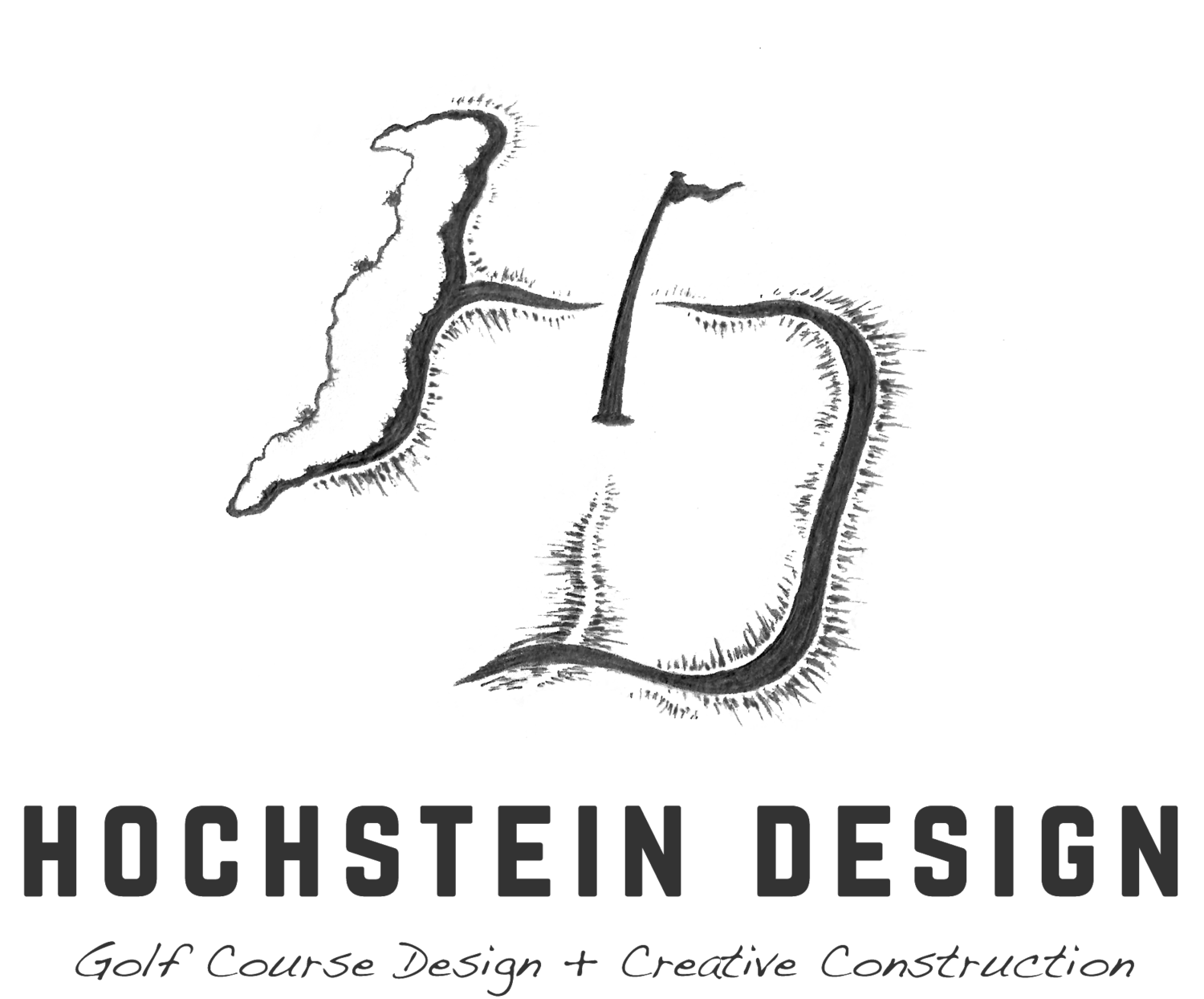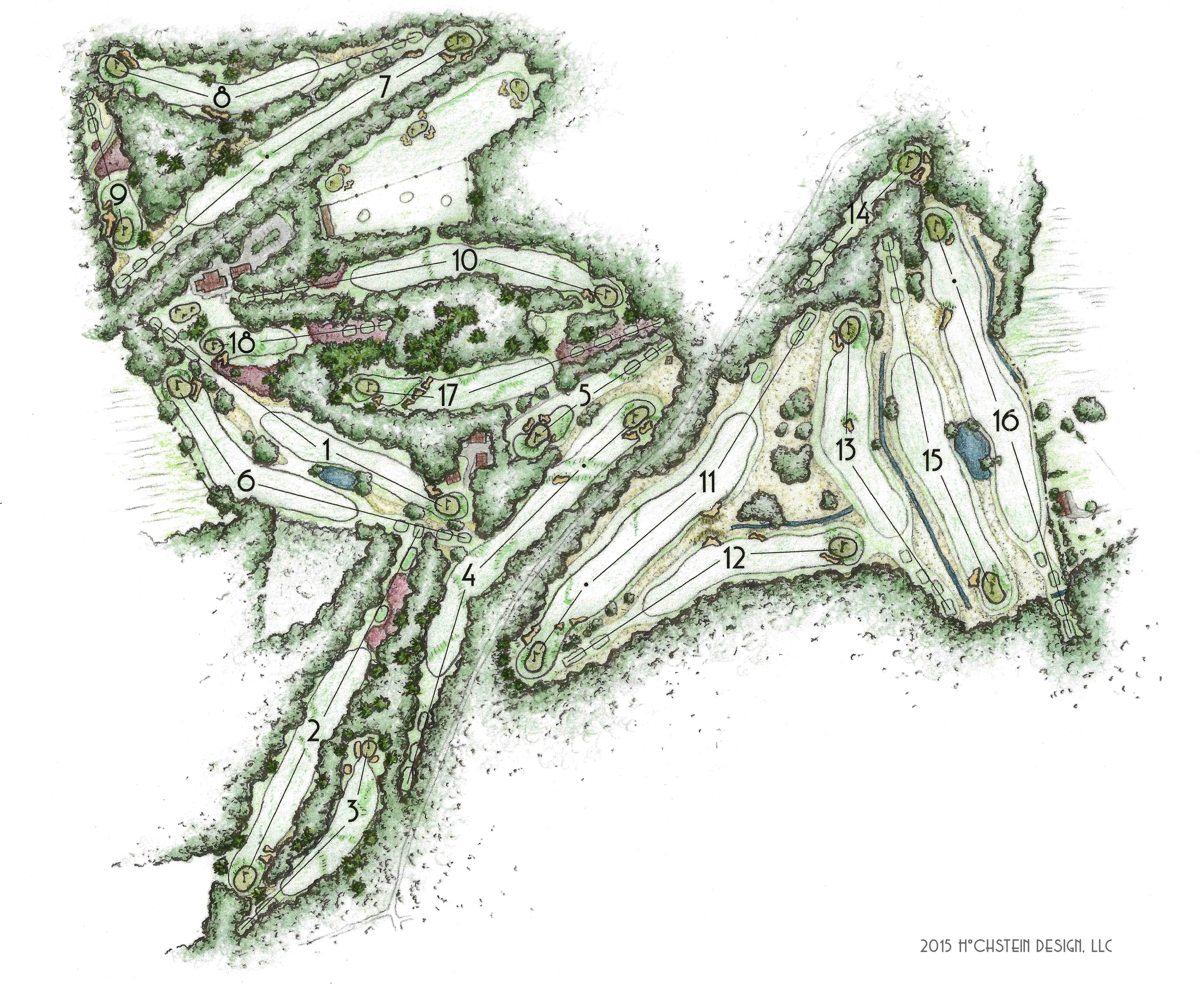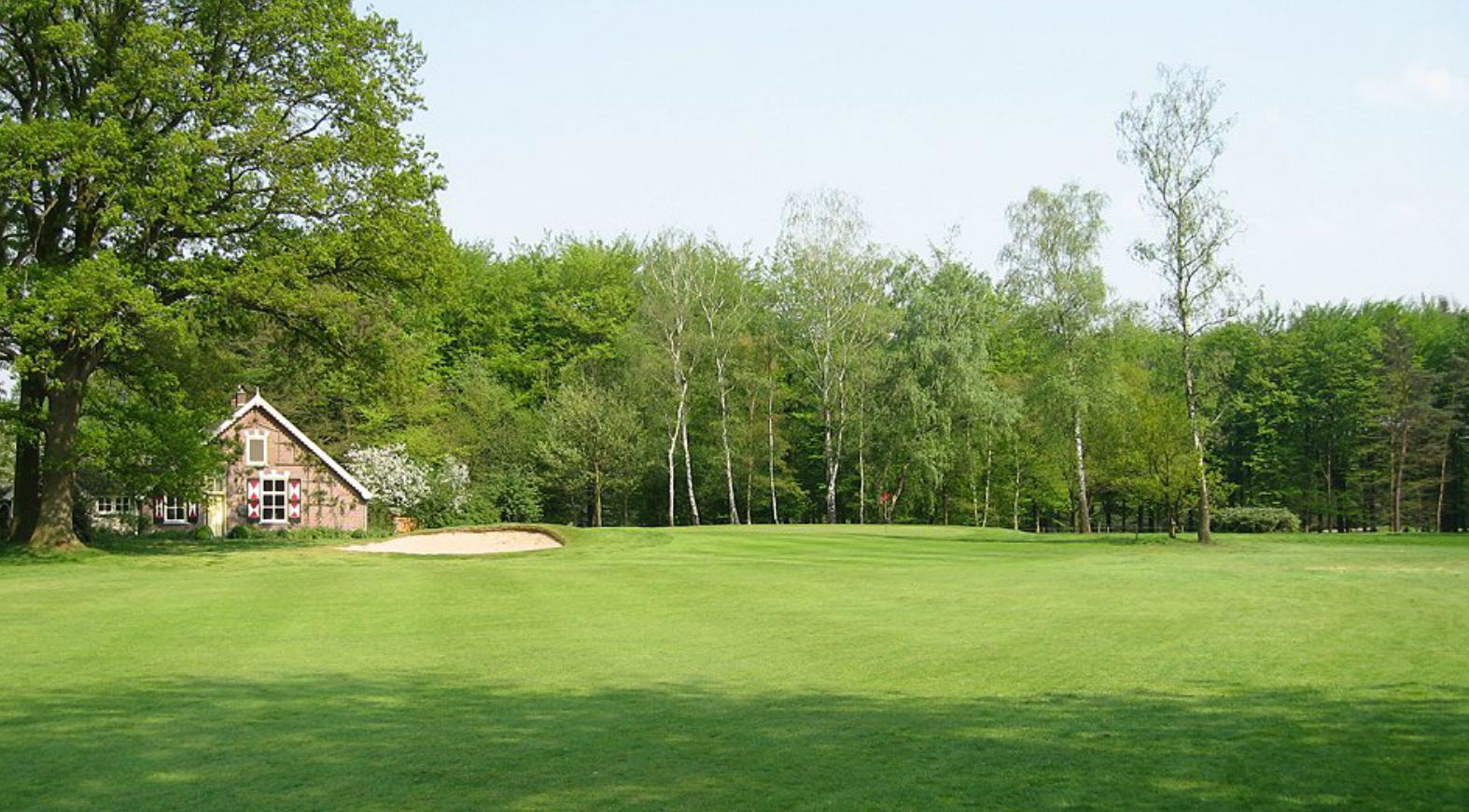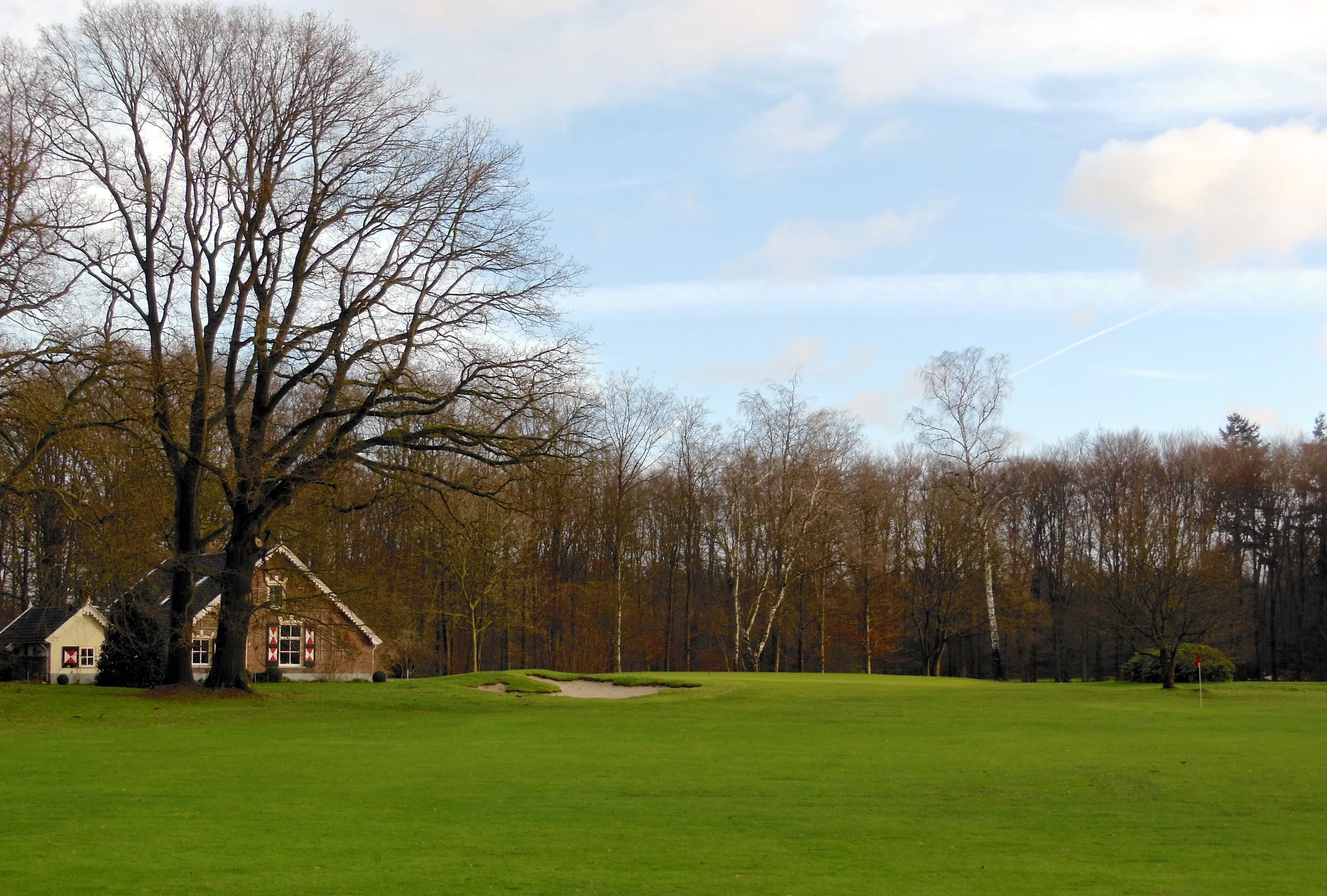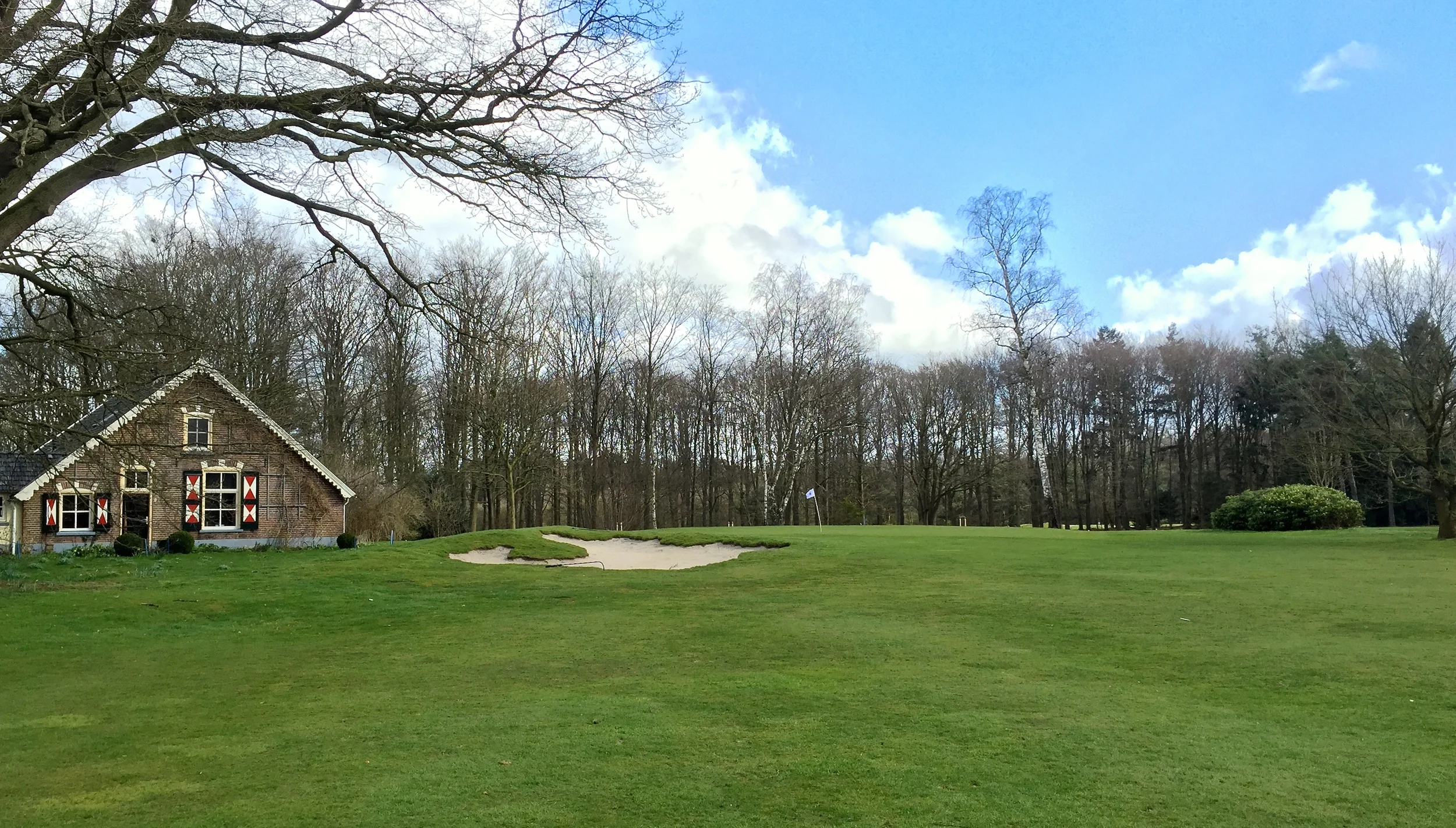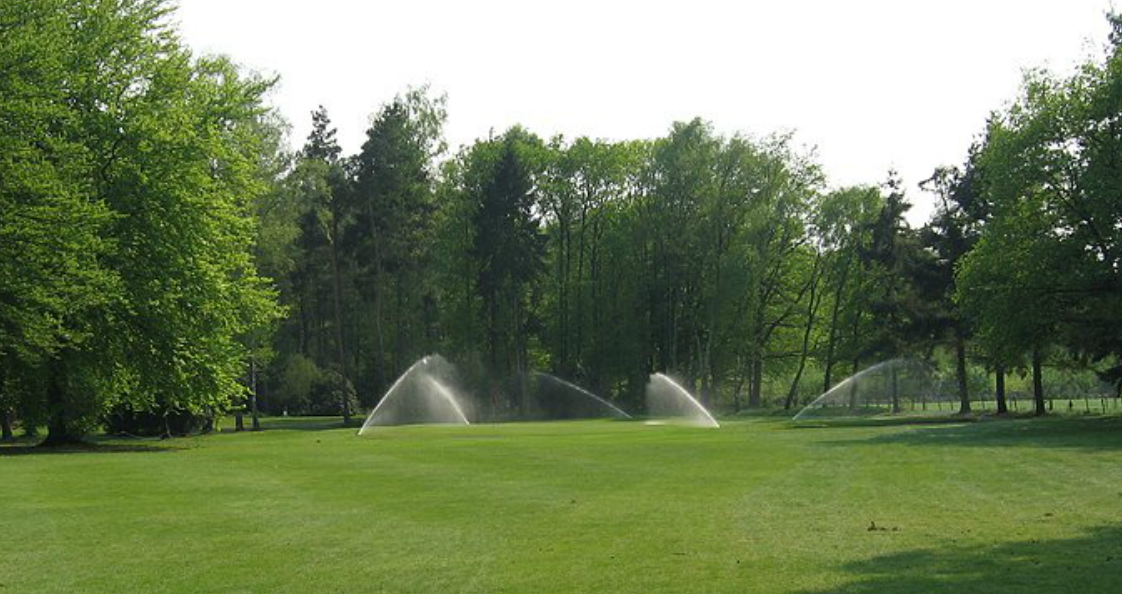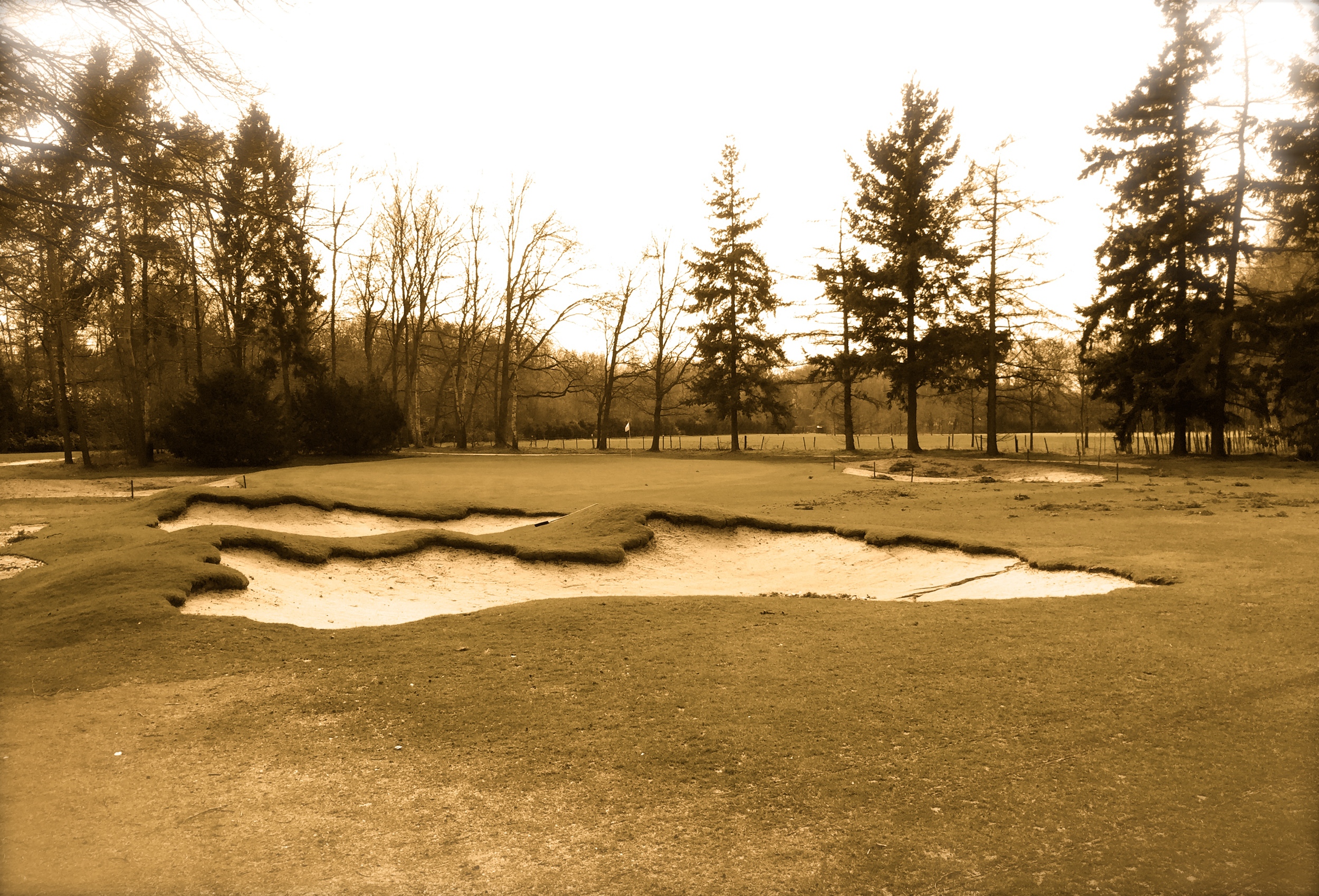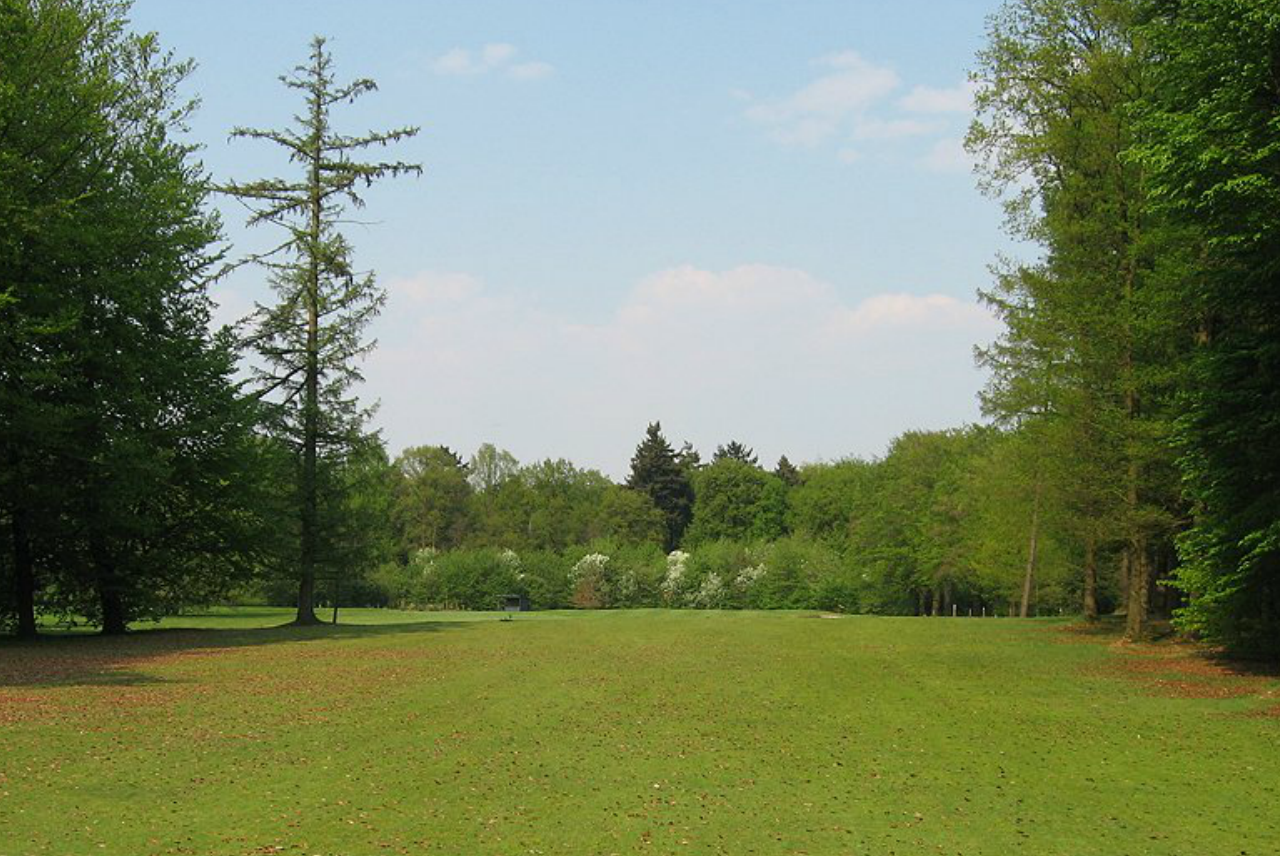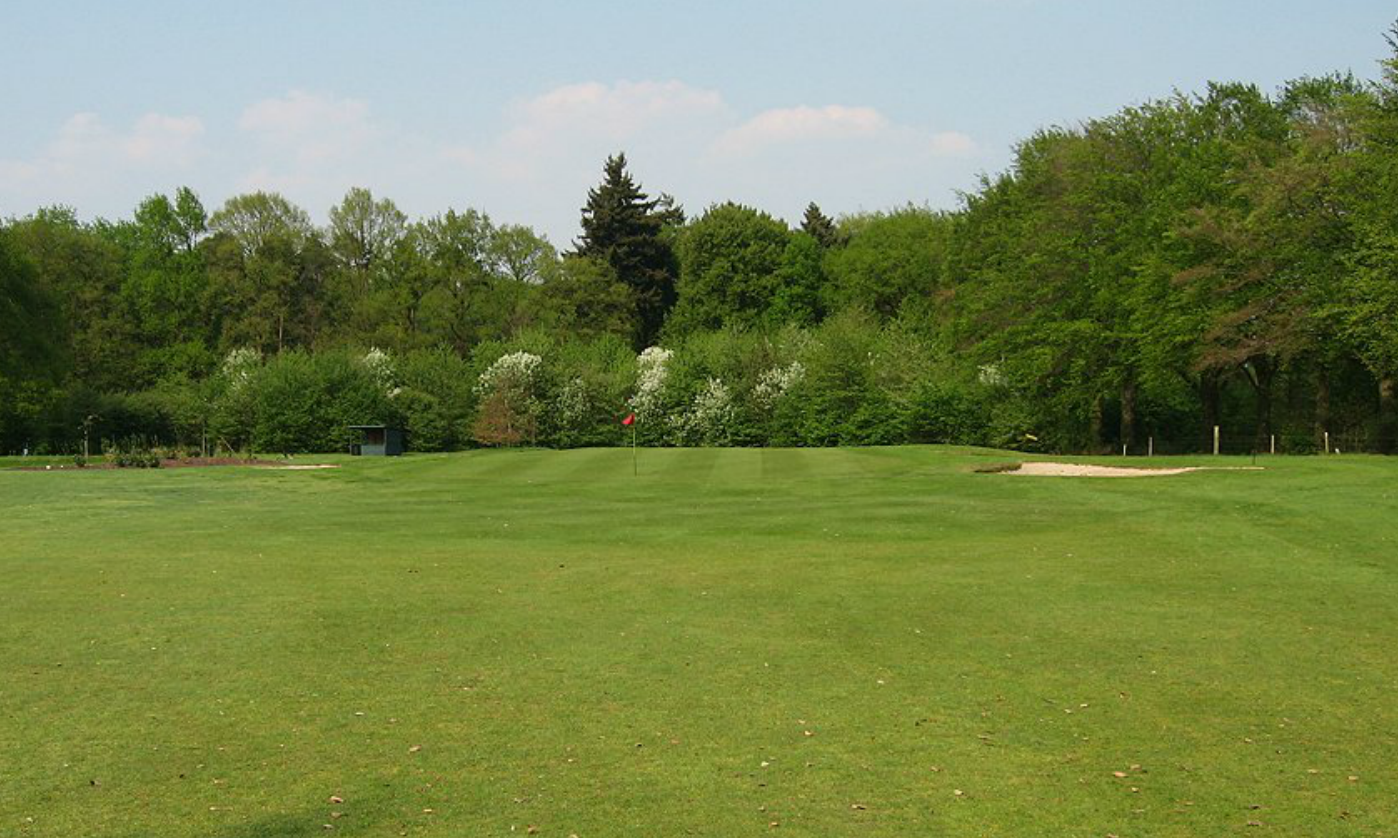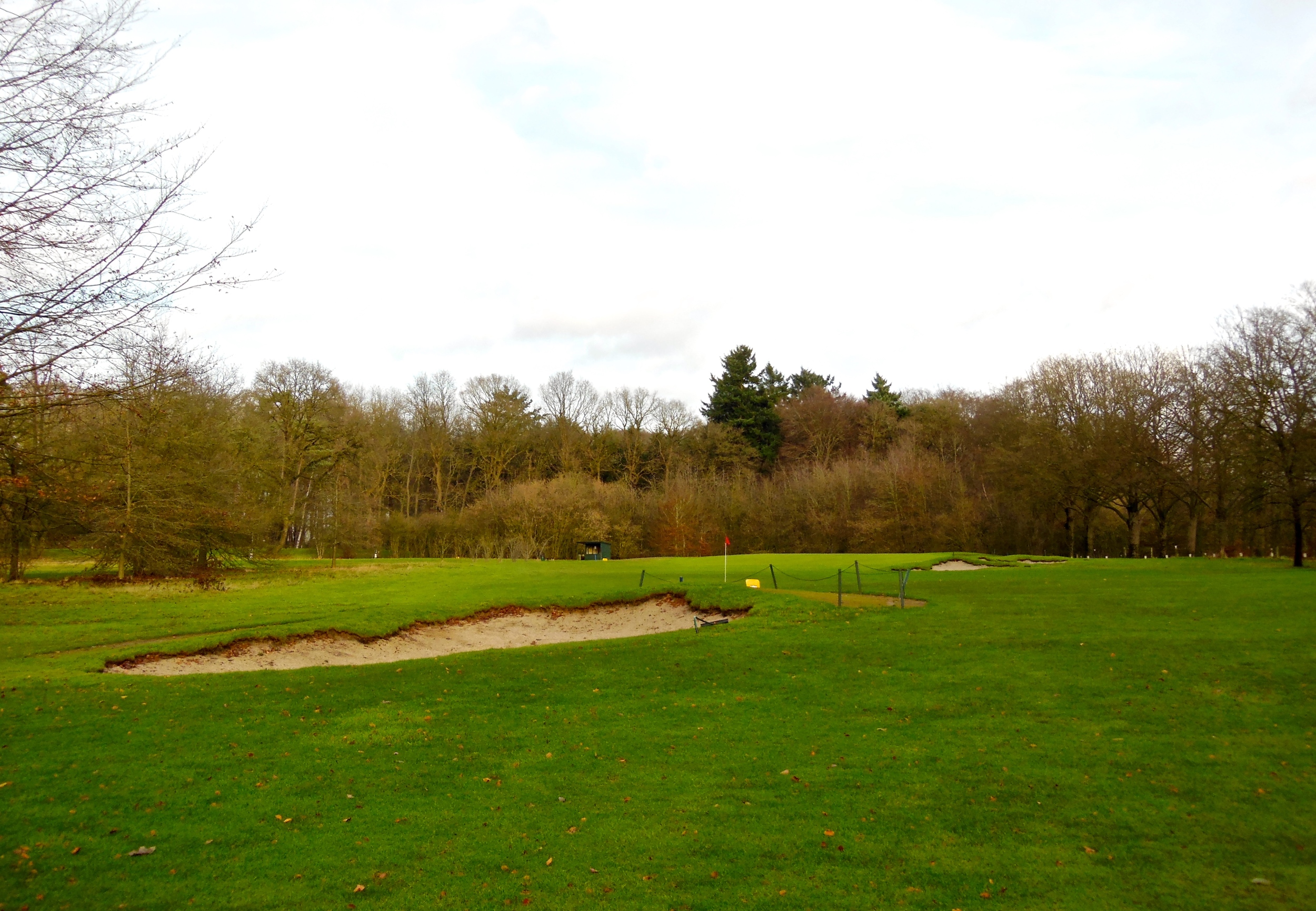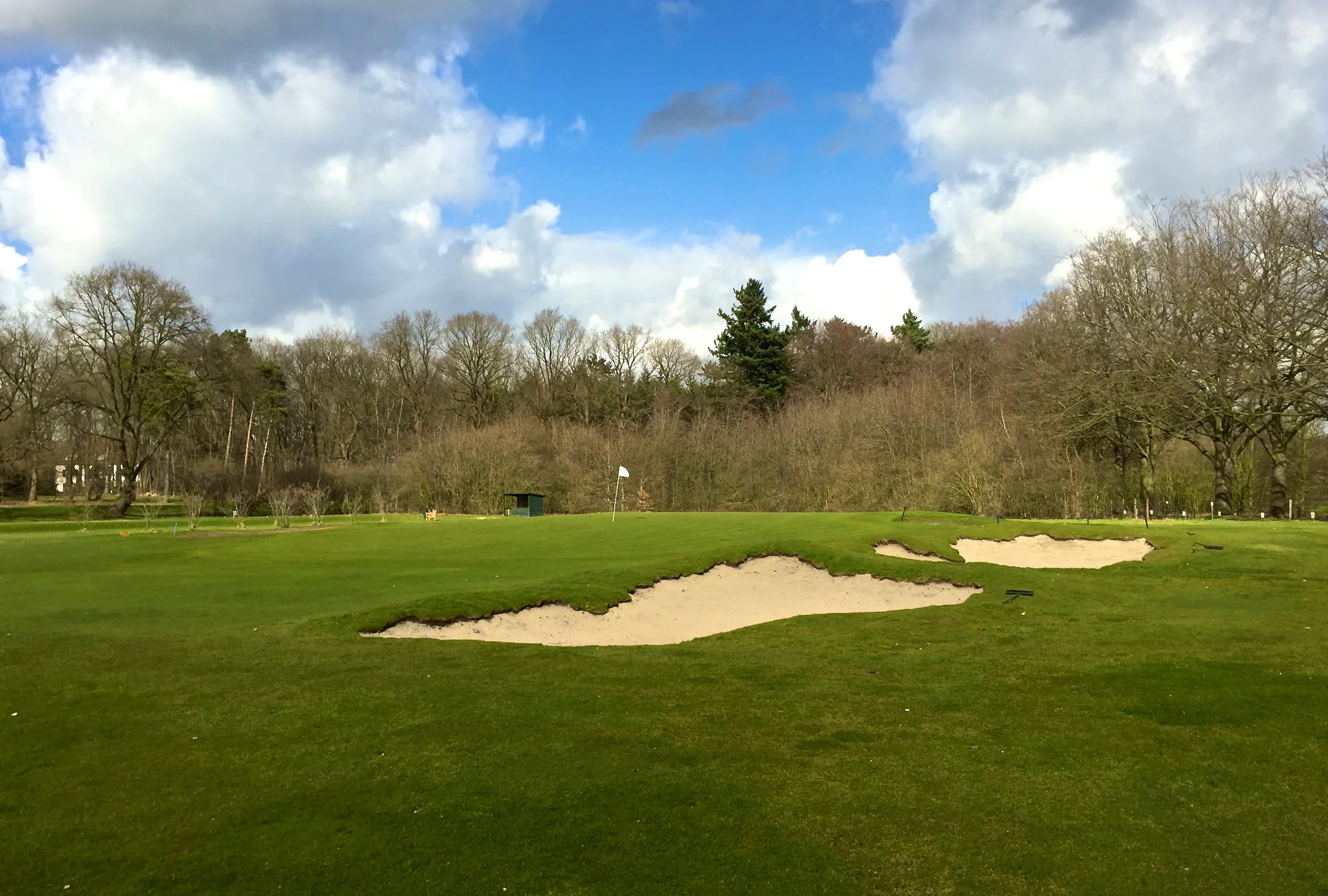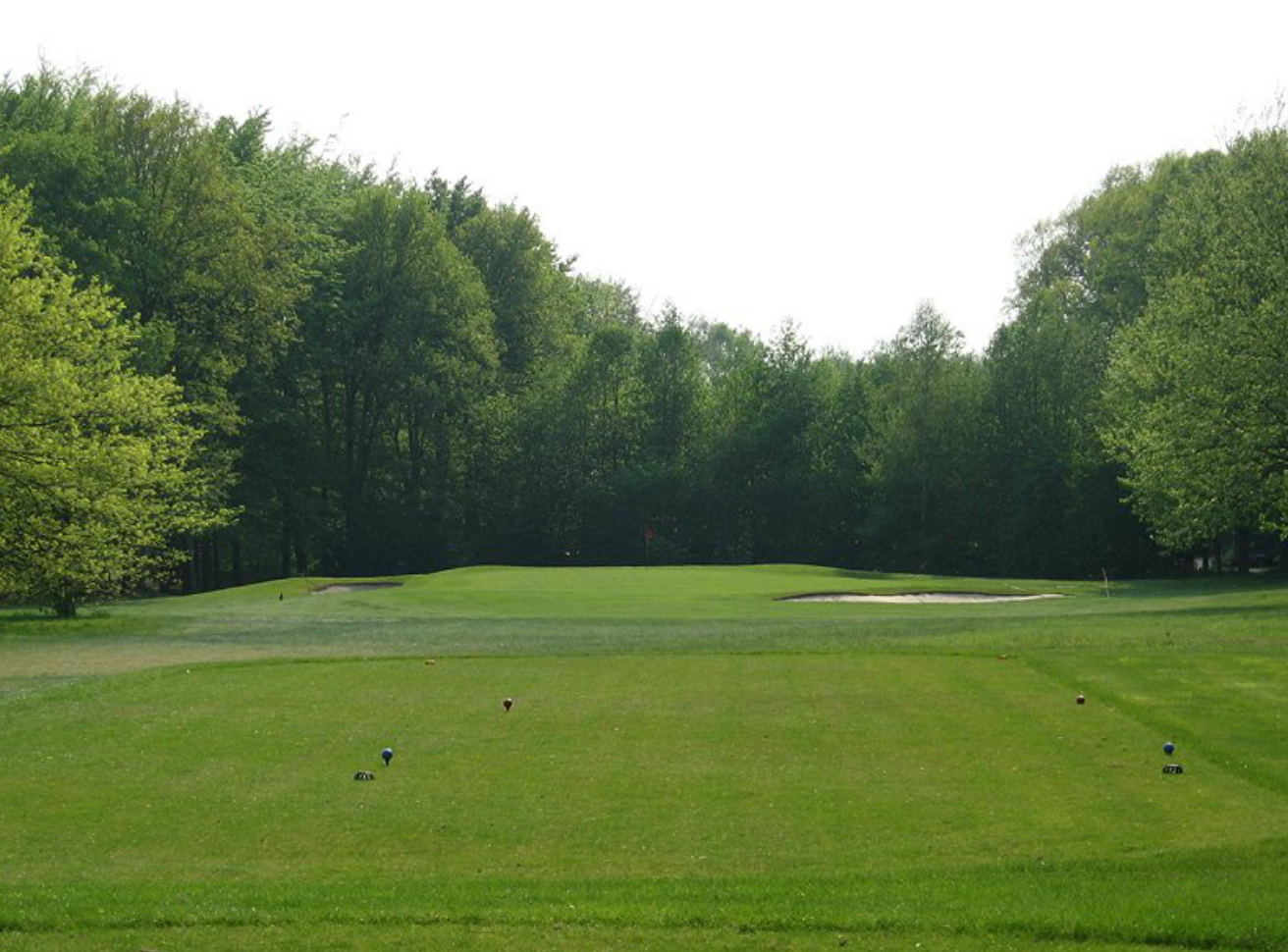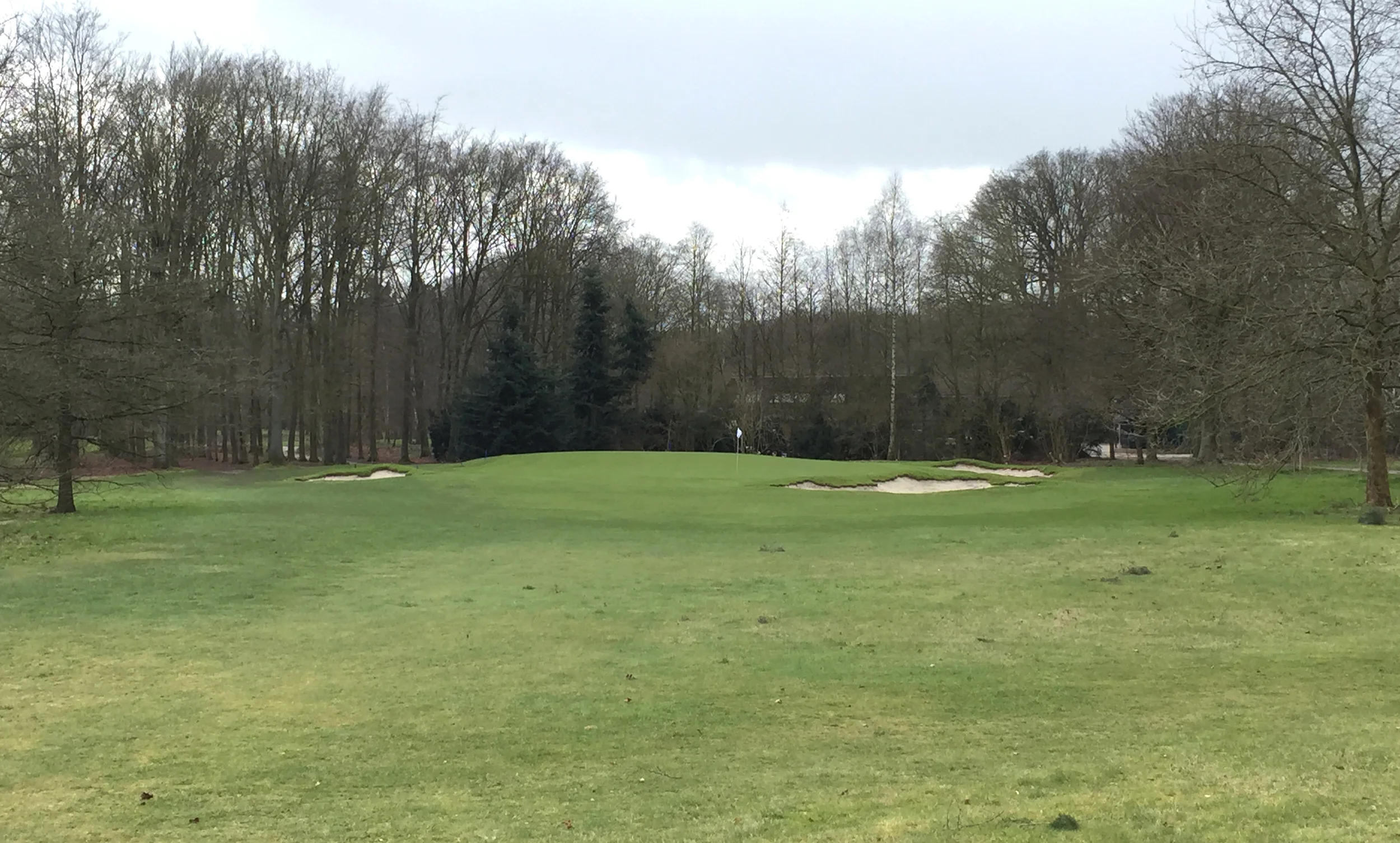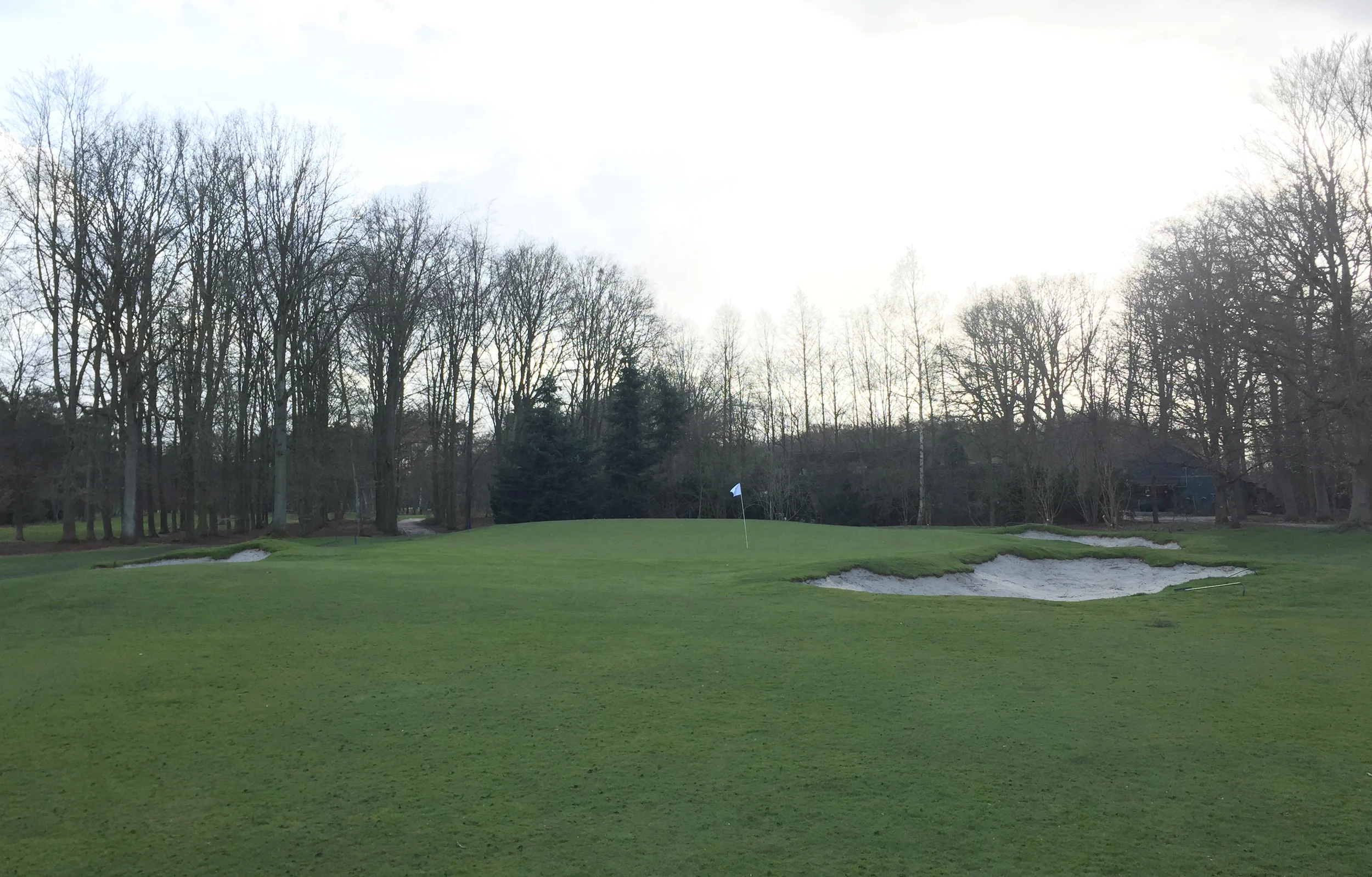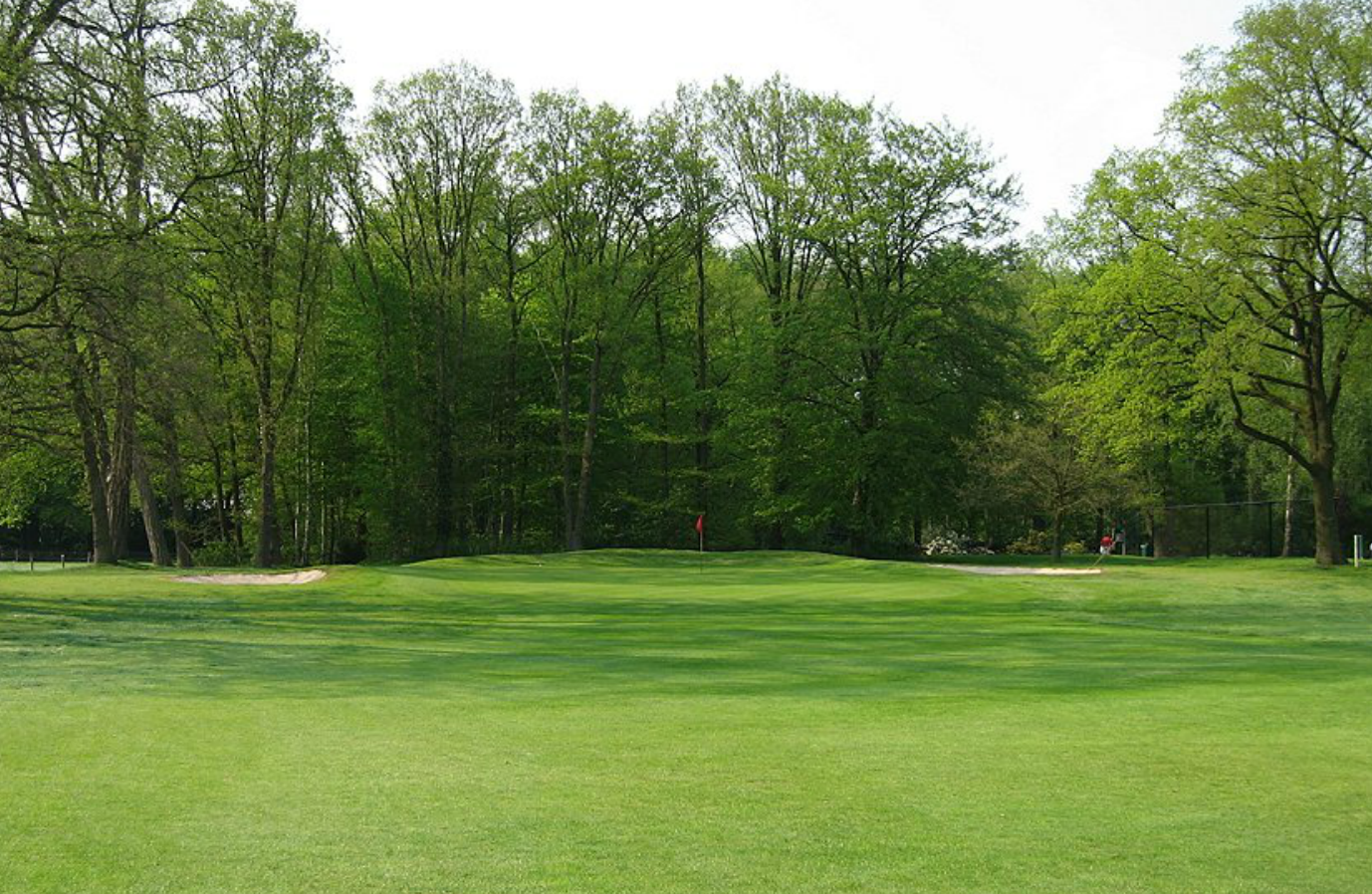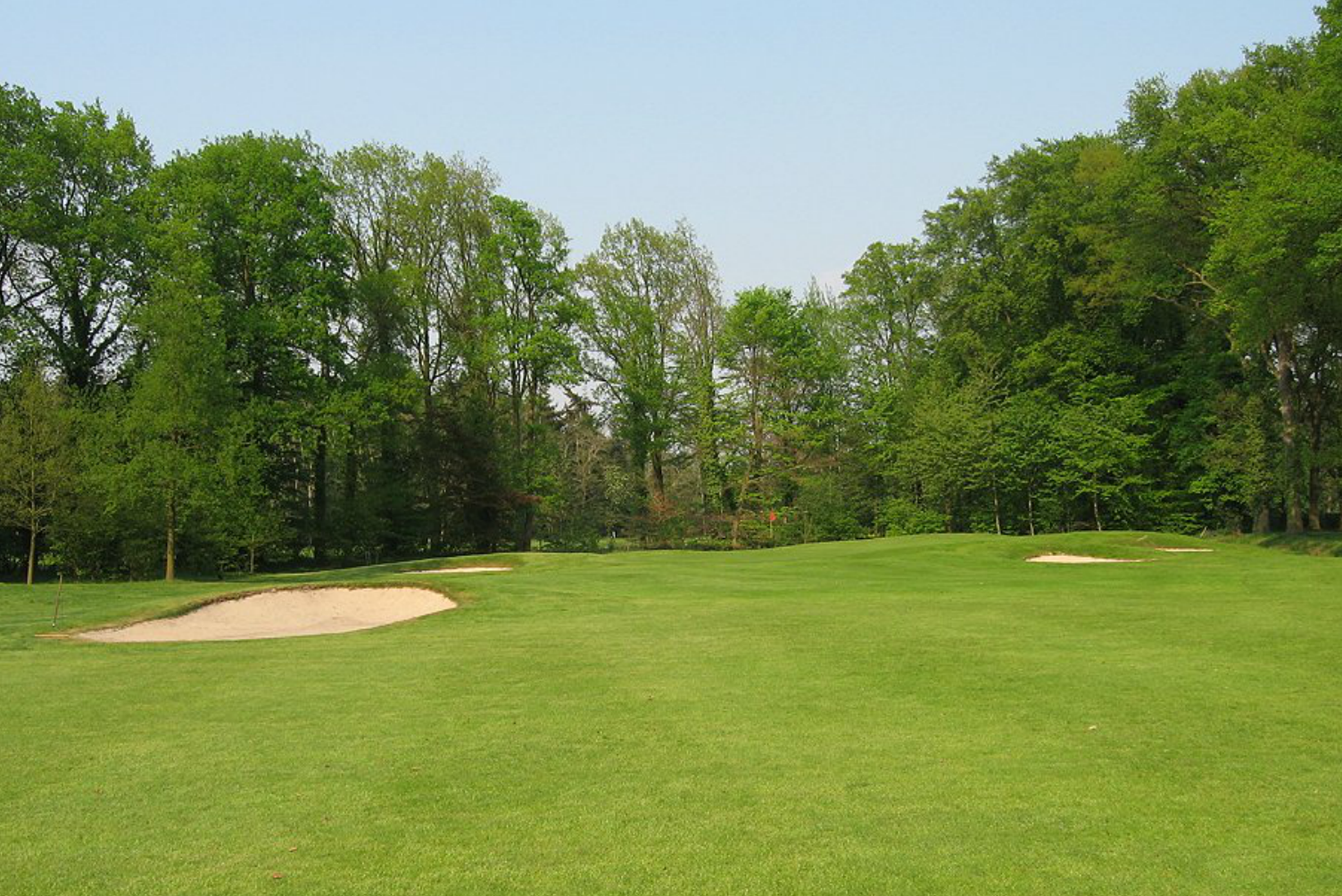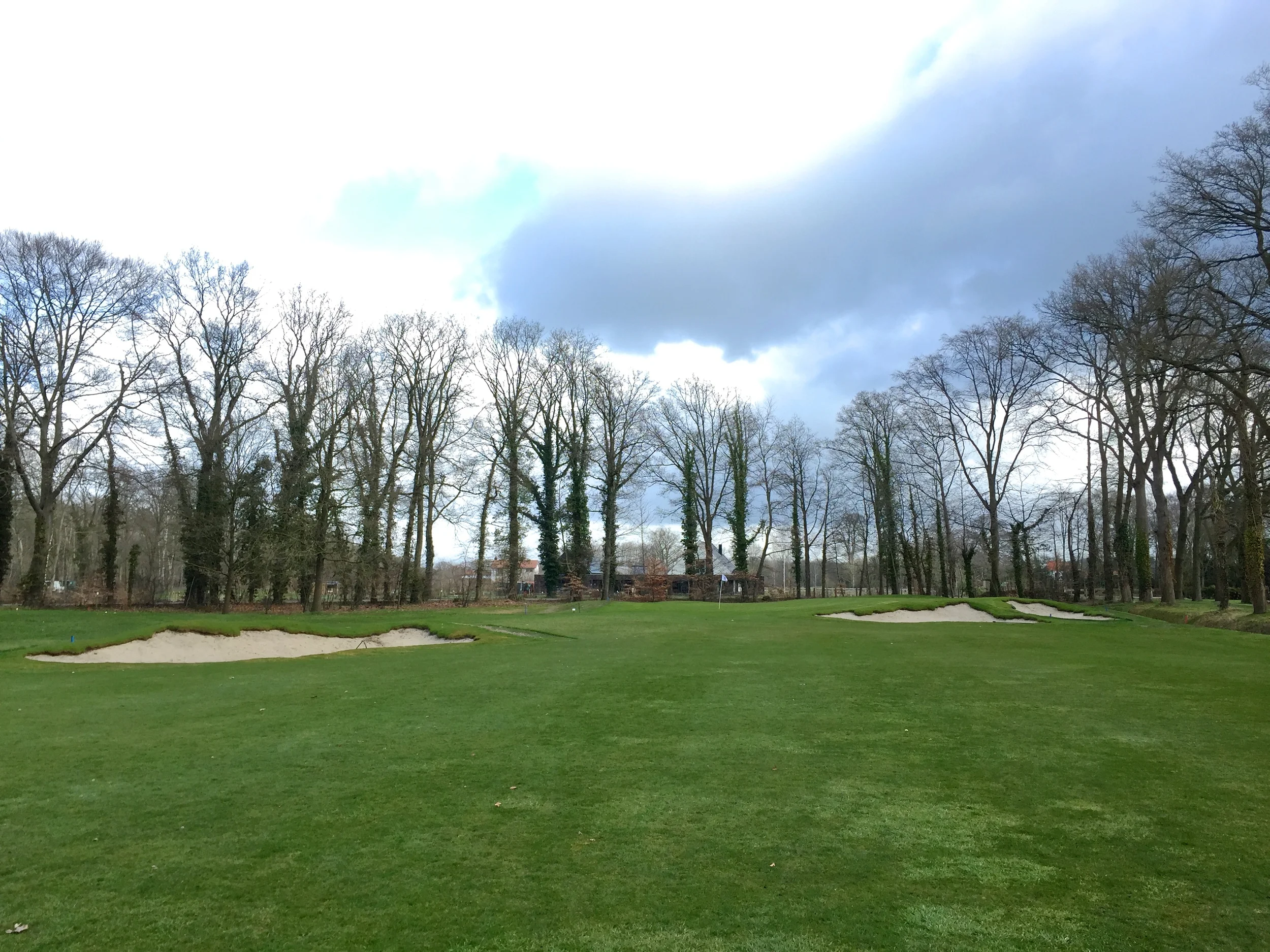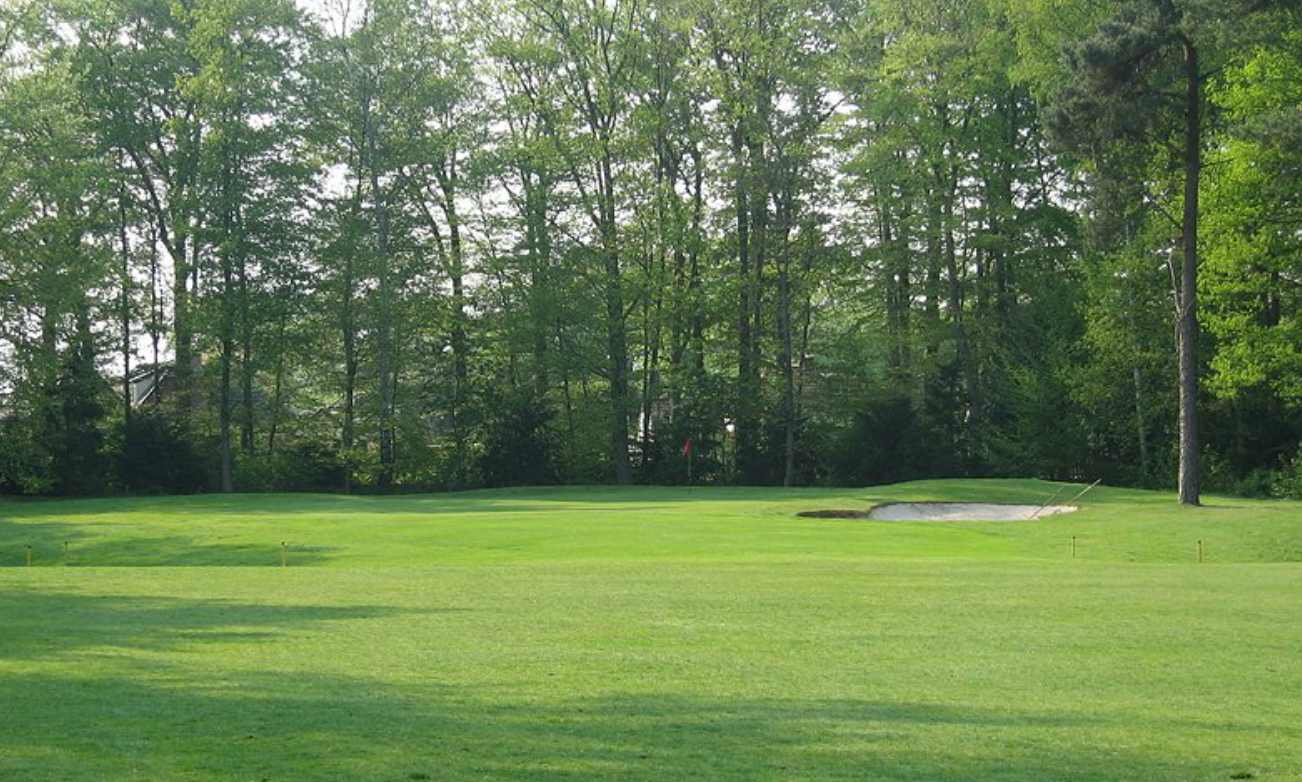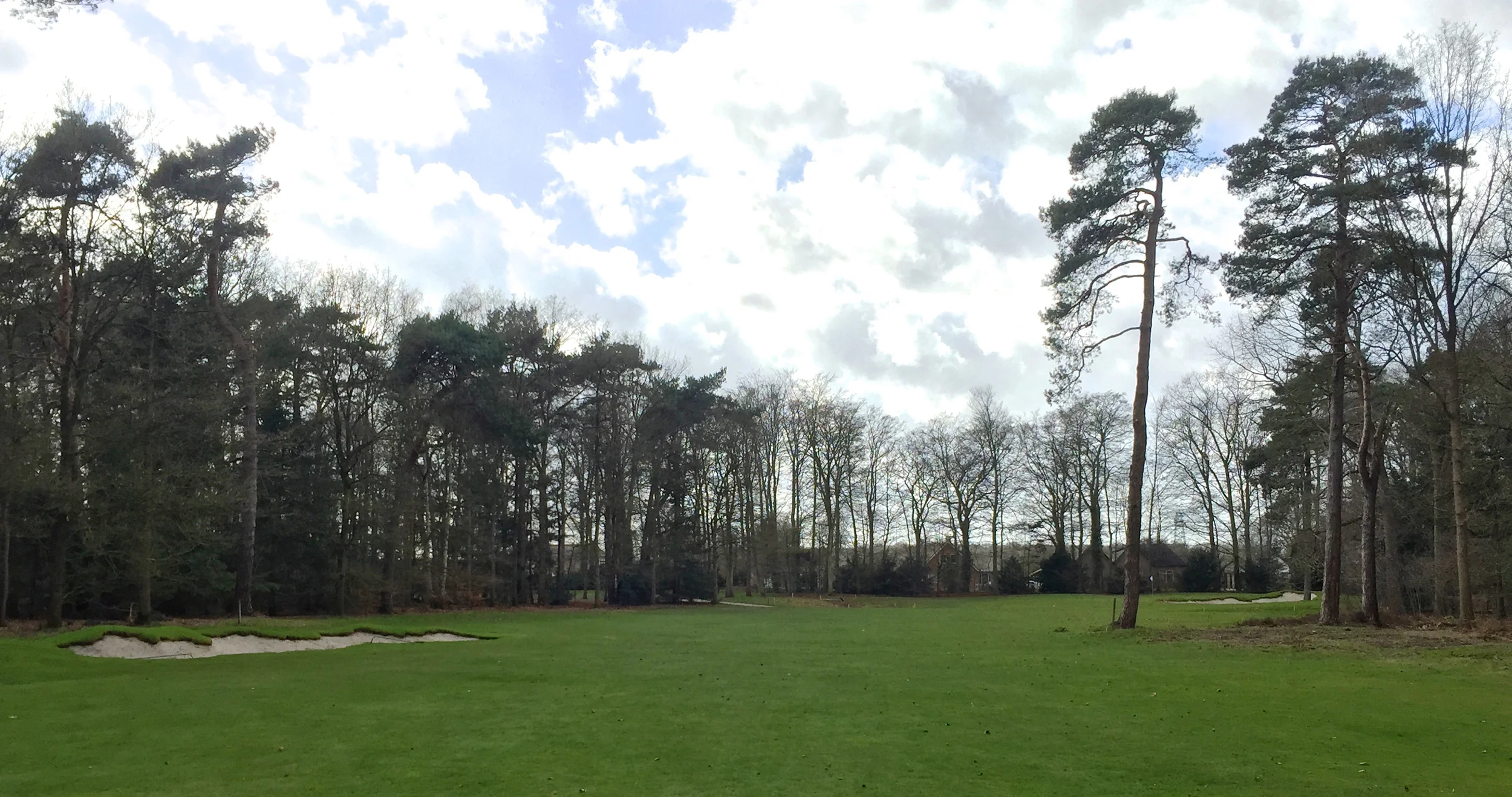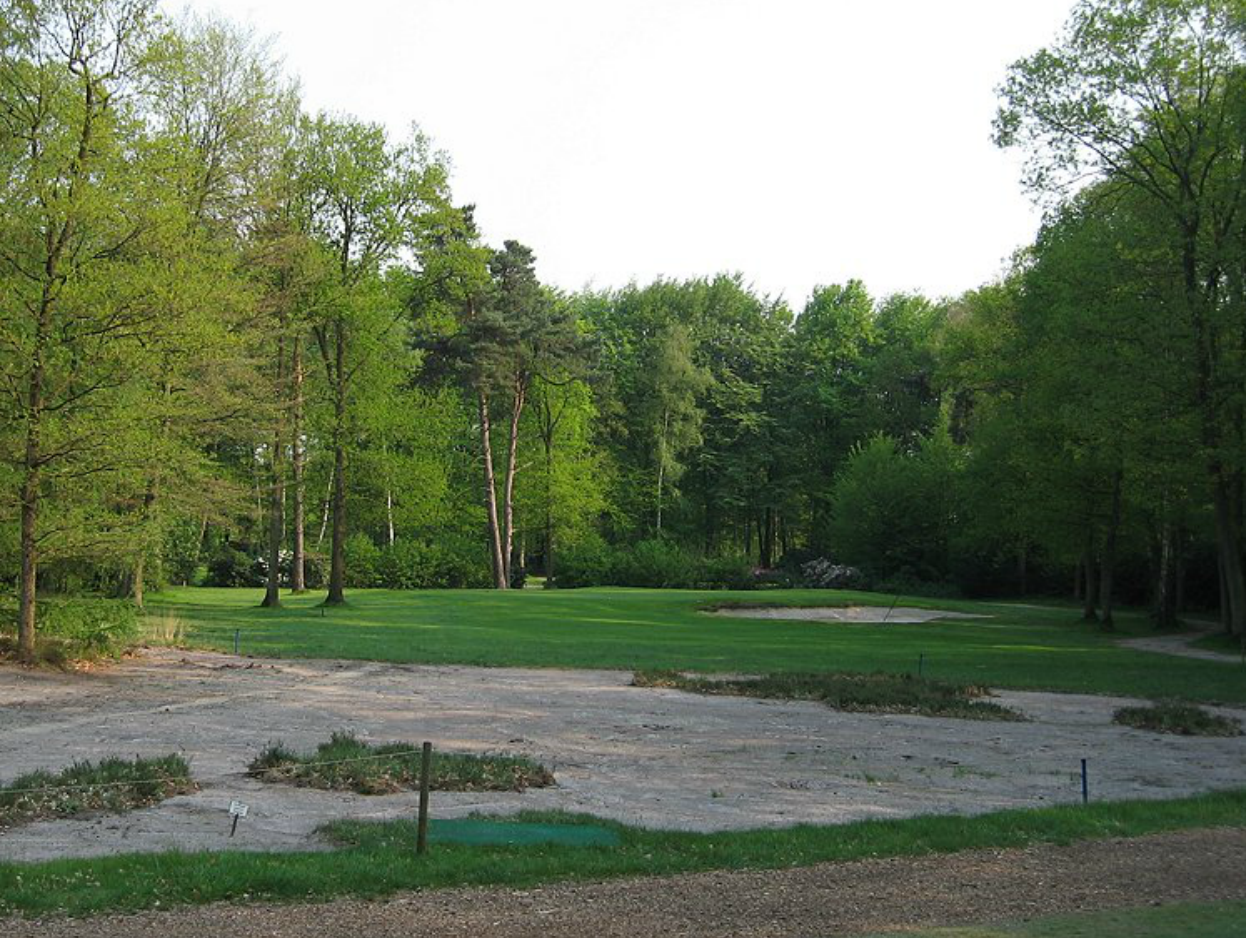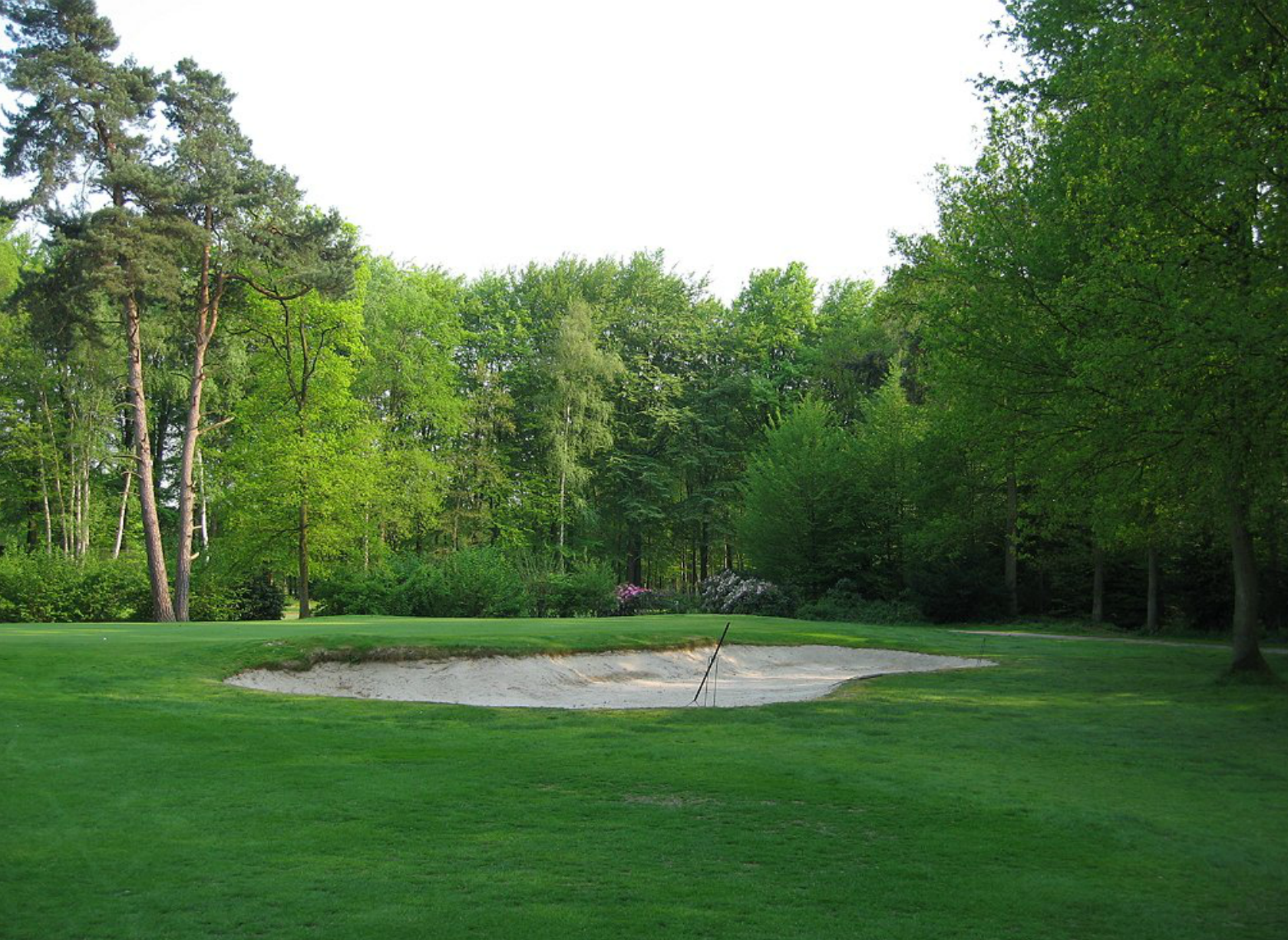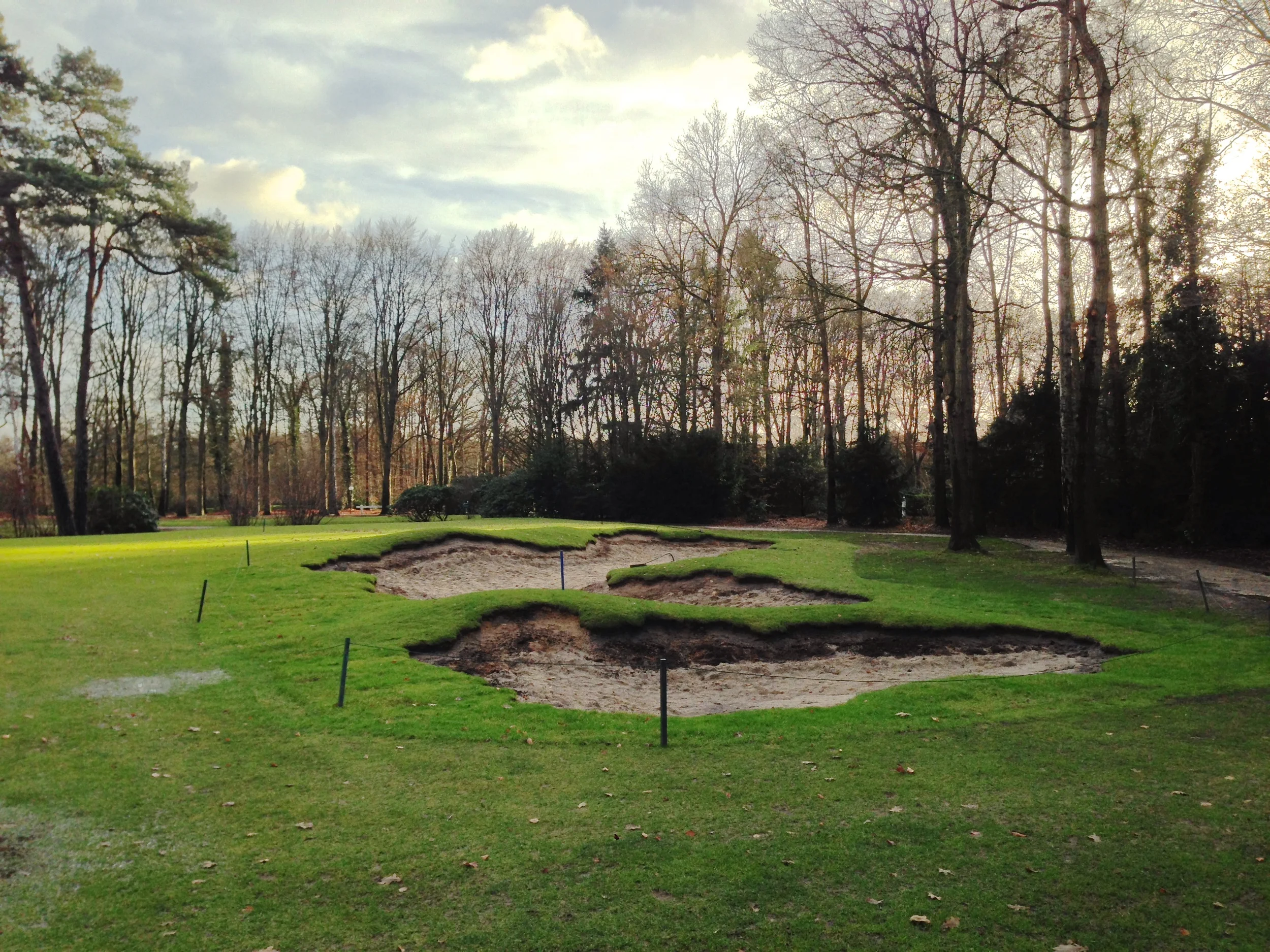The 9th hole at the Sallandsche Golf Club in Diepenveen, Netherlands.
As the title suggests, this post is going to be image-heavy with before-and-afters of the holes on the front nine at the Sallandsche Golf Club in The Netherlands. There are a lot of images, but the benefit of the scrolling format of this site is that a lot of images can be seen quickly with no clicking or navigating. So, scroll away and pause at whatever piques your interest.
I've previously covered the development and story of the project in Part I posted below, and back nine imagery will follow in the next post, Part III. Many of the images are taken very late in the Fall or very early in the Spring, so what you see is not as good as it can and will be. Whenever I next return during the warm months, I will take more images with a better camera and post a couple of favorites. Without further adieu, let's get to it with some plan views and then the first hole, a medium length par 4 that doglegs slightly left and has a small drainage pond at the outside bend of the dogleg.
*Before images courtesy of Frank Pont and Infinite Variety Golf Design*
Screenshot of un-updated satellite view of Sallandsche and the old bunker scheme.
A new plan of the renovated bunkers and grasslines at Sallandsche drawn by Hochstein Design for the 2015 scorecard.
Hole 1 before. This was actually one of the better and more visible existing bunkers, but it needed to be closer to the green and in character with the rest of the new bunkers. Note how close the house is to the green--a neat feature and something you'd only see on an old European course.
After images of the first hole from the fairway and approach. There was no initial "vision" of having the nose and wing on the left; it was more a reaction during the build to keep the bunker from looking too square.
The second hole originally called for filling the right and left flanking bunkers and building a new bunker at the left front of the green. There was one problem we observed though: nearly all of the water from the last 100 meters of fairway ran right through a swale in that spot. We decided that the best place for the bunker would be further short and left on the other side of the swale. After all, the hole was a long par 4, and this new placement would really test long approach shots coming in, especially for those that fade the ball (like myself!), while still leaving plenty of room to the right for short hitters to play around. There was one more problem with this spot though: existing irrigation ran right through where we wanted to place this bunker. Rather than tear up the fairway to rework the pipe, we decided it would be easier and add a little more visual interest to split the bunker in two. With the location of these bunkers coming on a downslope, this split would also help with visibility without having to dig a deep massive pit.
Hole 2 before image. It's not the sprinklers and shadows hiding the two flanking bunkers on each side; it's that you just cannot see them.
Hole 2 bunkers from the fairway. From here it looks like three bunkers, but it's two. That is a visual trick I observed and picked up during my 2013 visit to the Melbourne Sandbelt. The bunker fill-in on the right is shaped to help balls on line with the green but repel those running right of it.
The 2nd hole bunkers close up with antique filtering for effect. Another benefit of bunkers in close proximity is that the look and relation of the two constantly changes as one moves closer and around them.
The 3rd hole was put on hold indefinitely, so on to the 4th we go. This is the first par 5 of the round, doglegging to the right and playing over a ridge about 120 meters short of the green. Frank's plan called for eliminating the bunkers at the sides of the green, building two angled bunkers on the right of the green that cut off the approach from over there, and adding a new bunker into the left part of the ridge to guard the ideal angle of approach.
Before images of the 4th hole showing the ridge and then the green. Note the left and second right bunkers are barely visible.
This image shows how the ideal angle of approach is guarded by this bunker in the ridge.
The greenside/approach bunkers of the 4th hole after.
The 5th hole is the first par 3 of the course, and this was one of the green surrounds that received the most work. The green itself rises, narrows, and crowns as it moves toward the rear. It makes for a great pin placement, but the previous version was cluttered with "saving" slopes that didn't drain anywhere and bunkers that had low visibility. The solution was to shift the bunkers forward to the wider part of the green, enhance their visibility, and get rid of the excess "saving" slopes, which makes for great short game options around the back and leaves a clean and intimidating horizon line.
Hole 5 before with excess landforms in back and an invisible back right bunker
After images of the 5th hole. There are now three distinct hole locations: tucked right behind the bunker, least defended at the front opening left, and on the crown in the back. The visual of the green is stronger as are the playing qualities of the hole.
The 6th hole was another one with extensive work done around the green. As with the 5th, there was some unnecessary mounding crowding the back of the green. Half of it was used to fill in part of the old bunker on the right, which was shifted forward and across the right part of the green. The other half was used to fill in the left side bunker, which with the extra material we decided to turn into a hillock instead of a hollow as many of the fill-ins thus far were becoming undulating hollows. The result is somewhat of an inverse of the previous version.
Hole 6 before with back ramp and side bunkers that only punish the badly pulled or pushed shot.
Backramp is now gone, and a long hook of a bunker guards the front right of the green.
A closer view of the new bunker at the 6th. Note in both images that an effort was made to make the left side mound irregular and naturally shaped as opposed to a more spherical mound.
A sample of the micro contouring made in the wake of former bunkers; this is also at the 6th. These forms and ensuing short grass will make for interesting short game options, and they also have a nice horizon line from the nearby clubhouse.
The 7th is a short straightaway par 5 with one of the more interesting greens on the course with its right to left fall. Here we simply enhanced one of the more strategically sound holes by shifting left and enlarging the right greenside bunkers, eliminating the mostly blind left greenside bunker, and rebuilding the left side approach bunker that perfectly guards the ideal position for a pitch to the right hole location.
Hole 7 before. Here you can see the right to left tilt of the green.
The 7th hole after. I like how these bunkers all work together now.
The 8th hole is a short dogleg right around trees that also underwent some thinning during the project. The idea will be to be able to play low shots through these trees, though right is not the best place to be due to the long greenside bunker. A new bunker was added on the outside of the dogleg to break up maybe the straightest horizon line off a tee shot as well as guard the ideal line into the green.
Hole 8 before from about where the new fairway bunker was added.
Both new bunkers in sight at the horizontal 8th hole. No matter the distance, it is always important to have bunkers work visually well together.
he 8th hole greenside bunker now reaches all the way to the landform to the right of the green. Not sure if it was any good while digging, this ended up being one of my favorite bunkers on the course.
The front nine closes with a medium length par 3 that is on its way to becoming one of the more visually stunning holes on the course. The addition of heather off the tee, some tree removal and pruning, and the new bunkers on the right all give this hole a very strong heathland feel that should only increase going forward. The plan originally called for one very large bunker, but like the second hole, an irrigation line ran through the early part of it. Again, instead of using time and energy to move the line or compromise the size of the bunker, we split it in two. The result was a set of bunkers better than expected.
Hole 9 before from the tee. The work to plant heather in the foreground had just begun.
Hole 9 after image with antique filter for effect. Also like the 2nd hole, a cape was used to give the illusion of three bunkers when there is only one.
A close up view of the old 9th hole bunker.
A close up of the 9th hole bunker just after the final sod cut back in December. Here you can see that it is indeed just two bunkers.
Coming up next, Part III and the back nine. Thanks always for reading and viewing.
Cheers,
Brett
